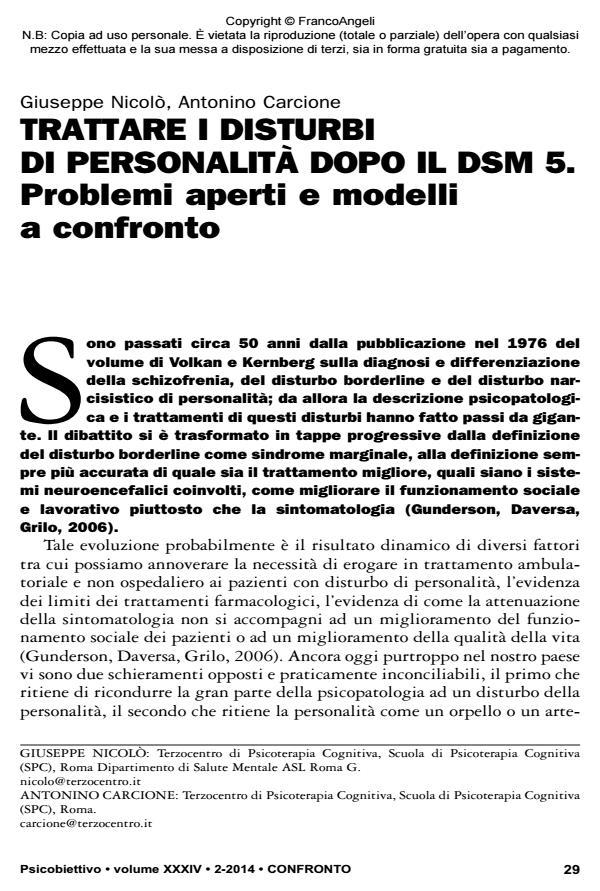Treating personality disorder after dsm 5 era. hot topics and compairing models
Journal title PSICOBIETTIVO
Author/s Giuseppe Nicolò, Antonino Carcione
Publishing Year 2014 Issue 2014/2
Language Italian Pages 17 P. 29-45 File size 556 KB
DOI 10.3280/PSOB2014-002003
DOI is like a bar code for intellectual property: to have more infomation
click here
Below, you can see the article first page
If you want to buy this article in PDF format, you can do it, following the instructions to buy download credits

FrancoAngeli is member of Publishers International Linking Association, Inc (PILA), a not-for-profit association which run the CrossRef service enabling links to and from online scholarly content.
Patients with Personality Disorders despite being one of the biggest challenges for mental health services (up about 15% of the clinical population) rarely receive a complete and integrated treatment as provided by the literature, they are usually treated with a pharmacological approach to reduce symptoms. This paper will discuss the publication of the DSM 5 and its implication in treatment, in particular the pattern of treatment of Terzocentro of Cognitive Psychotherapy in Rome that promoted the research on meta-cognition and on severe patients will be described and analyzed.
Keywords: Personality Disorders; DSM 5; Meta-cognition; Interpersonal Meta-cognitive Psychotherapy; Integrated Treatment.
Giuseppe Nicolò, Antonino Carcione, Trattare i disturbi di personalità dopo il dsm 5. Problemi aperti e modelli a confronto in "PSICOBIETTIVO" 2/2014, pp 29-45, DOI: 10.3280/PSOB2014-002003